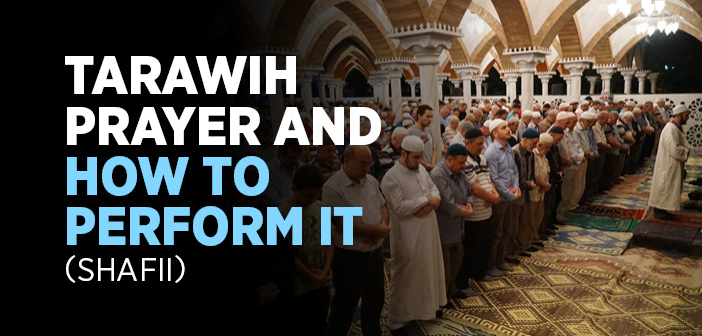What is tarawih prayer? How to perform of tarawih prayer?
Tarawih is the plural form of the word “tarwiha” which means, “to rest/relax”. In the Tarawih prayer, after the completion of every four cycles, one rests for a duration of about four-cycle prayer, this is why it is called the Tarawih prayer. In order to follow the example of the pious predecessors, it is recommended to sit during the breaks between the cycles.
The Tarawih prayer is a Sunnah mu’akkadah prayer upon every man and woman during the holy month of Ramadan. It is supported by the actions and sayings of the Messenger of Allah (pbuh).
The Tarawih prayer can be performed individually at home or in mosques in congregation. It is recommended to perform it in congregation at home or in mosques. Those who perform it individually miss the spiritual rewards promised for the congregation.
The Tarawih is a twenty-cycle prayer performed in congregation. The first eight cycles are Sunnah muakkadah, while the remaining twelve cycles are recommended (mustahab). There are reports that it was performed in eight cycles during the time of the Prophet (pbuh). However, because about one hundred verses used to be recited in every cycles of this prayer, it was taking quite some time. This is because the aim was not to perform certain cycles of prayer, but to revive the night, eventually the number of verses decreased and the number of cycles increased. In the end, the second caliph ‘Umar (r.a.) commanded tarawih prayer to be performed in twenty cycles, and this practice continued during the time of the caliphs ‘Uthman and ‘Ali (r.anhum) and in later times.
The imam should observe the proper rules of Qur’anic recitation and fulfill the rule of ta’dil-i arkan. Recitation of the entire Qur’an in tarawih prayers throughout the month of Ramadan, i.e. recitation of one page from the Qur’an in one cycle and twenty pages in one tarawih prayer, is a nice act to carry out.
The time of the Tarawih prayer begins after performing the obligatory cycles of Night prayer (‘isha) and continues until the time of the Dawn prayer. If one does not perform the Tarawih prayer in its appointed time, it should be made up later.
The Witr prayer can be performed before or after the Tarawih prayer, but it is more virtuous to perform it after the Tarawih prayer.
The Tarawih prayer is performed in pairs of cycles. If one does not close a pair of cycles by salams, the Tarawih prayer will not be valid. The Tarawih cannot be performed by making an intention to perform unqualified supererogatory prayer. In other words, one should state the intention as “to perform the Tarawih prayer” or “to perform the Ramadan night vigil.”
Source: Fiqh1 (According To The Shafi’i School Of Islamic Law), Erkam Publications





